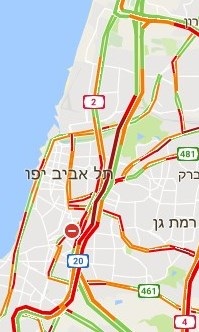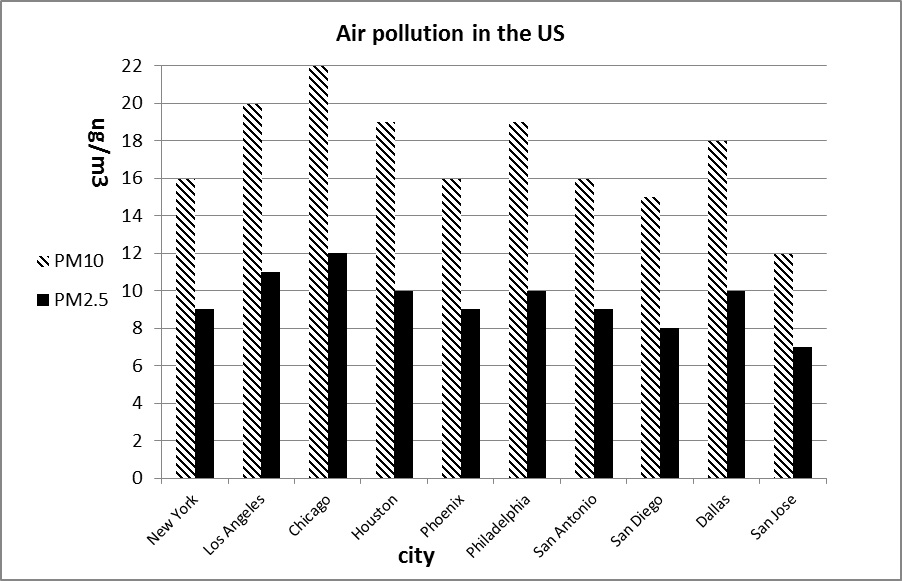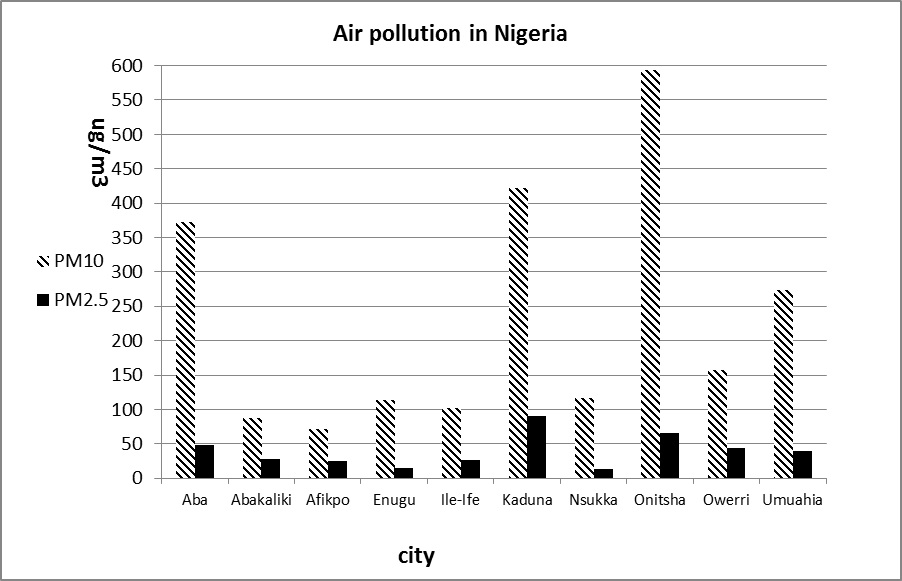All published articles of this journal are available on ScienceDirect.
Driverless Cars will Make Union Stations Obsolete
Abstract
Driverless vehicles having been tested in several locations throughout the world will be an authorized means of transportation soon. These vehicles will unquestionably influence the global transport market trends. One of the notable driverless vehicles influences will be the laying aside of the lion's share of public transportation means, thus there will be no need for union stations anymore. Driverless cars will be able to take passengers from almost anywhere to their destinations without any need of connections; therefore, the concept of a central station to change buses or trains will not be pertinent.
1. INTRODUCTION
Union stations are common throughout the world [1]; however, in the near future there will be no need for them. They can be used for alternative purposes and in the times to come, there will be no need for them when planning new cities.
The driverless cars are now legal in several states in the US with even no driver for backup (Arizona, California, Michigan and Ohio). Many states and other countries will join them in the coming years. When the driverless cars are widespread, passengers will prefer to ride them, because they will take them from their home to their destination and not from one train station to another. In addition, there will be no need for connections with other trains or other mean of transportation; therefore, the union stations will cease to exist.
Driverless cars have been making progress [2]. This new technology requires appropriate operational models for assessing the driverless cars profitability. In order to show the practicability of these operational models, the competitiveness of their cost must be analyzed.
In a study [3], the authors make a comprehensive analysis of the driverless car costs. Their conclusion is that, public transportation can only keep on being economically competitive to driverless cars, where transportation demands can be bundled to larger units. Particularly, such transportation demands occur in dense urban regions. In such regions, public transportation can be cost-effective and moneymaking even if the fares are lower than driverless pooled taxis fares or driver
less cars costs. In most of the world, such a bundling is not feasible, so shared and pooled driverless cars will be more cost-effective.
The current state of affairs that we are used to, will be changed. Nowadays, union stations are an attractive location for small businesses like fast food, inns and more. In a few years, there will be no union stations and the transportation setup will have a minor influence on the urban area, if any.
2. UNION STATION MAKES TRAFFIC CONGESTIONS EVEN WORSE
Studies in various countries have shown that currently, traffic congestions and jams are mainly triggered by different responses to events on the roads and different driving patterns of different drivers [4, 5]. On the other hand, driverless cars of even competing companies will behave much the same way, so the trouble of traffic congestions is going to be significantly alleviate when driverless cars will be the standard.
Moreover, union stations draw traffic of not only public transportation, but also of private cars that are driven by people who just need a solution for the first and the last mile from the union station to their home [6]. Also, the parking seekers near the union station make the congestions even worse.
In addition, street parking occupies areas that could be utilized for moving vehicles [7], because a vacant driverless vehicle can move automatically to a remote parking [8, 9], which can be farther away from the union station. This will also generate an uncomplicated expansion of roads.
Another issue is the subsidization of rail systems. Most of the countries subsidize their rail systems. China invests $128 billion in rail each year [10], whereas Europe invests €73 billion in rail each year [11]. The subsidizations are a chief financial part of rail system budgets almost anywhere in the world. Only Japans' rail system is not subsidized. Without subsidization, almost no rail system can survive. Only freight rails in several lines can be moneymaking [12]; however, the freight rails will also have a competition with the new technology of self-driving truck platoons [13]. Accordingly, most of the rail systems will perish as soon as subsidization is brought to an end. In a study [14], the authors doubt the effectiveness of subsidy for R&D. Subsidy for rail fares is much more.
Rail systems, in reality, lose billions of dollars every year. If these rail systems cannot stay alive, they should be allowed to humbly depart this life [15]. The billions saved from the rail systems can be invested in roads with the aim of reduction of traffic congestions. If there is no train in the union station, the justification for its existence will be significantly decreased.
The highways will have an opposite influence. i.e. they will have to serve more traffic volume, but this growth can be handled.
Where an expansion of the road is possible, such an expansion should be carried out [16-18]. Where a road expansion is impossible, a second floor of roads should be built as was done in Kobe, Japan, Chicago, USA and many other places in the world [19]. A second floor of roads in Kobe, Japan is shown in Fig. (1). The Iranians built a second floor of traffic lanes on the highway goes across Tehran as well [20]. So, any road can be expanded and the money saved from eliminating subsidization of rail systems can be used for this expansion.
An example is the most congested highway in Israel i.e Highway no. 20. In October 2013, a section of this highway was expanded in to five lanes; northbound and southbound [21]. As a result, this section became uncongested. Fig. (2) shows the traffic congestion in 17:00 in Highway no. 20 in Israel. The expanded section is surrounded by an ellipse. It can easily be seen that in this section the congestion has been released.


3. PUBLIC TRANSPORTATION IS NOT THE BEST ANSWER FOR DISABLEDS
In the era of driverless cars, even people with disabilities or people with an exhausting job will be able to travel in a car without driving [22]; Moreover, shared driverless car will be much more attractive than transportation means arriving at a union station not nearby home. New apparatus like [23] can be mounted on the vehicles with the aim of making them more user friendly for disabled.
Furthermore, drunk, reckless, or distracted drivers usually are not mindful of their unsafe way of driving. Many authorities try to convince these drivers to leave their cars and use public transportation like trains. Some of these drivers come to an understanding that it is better for them not to drive, but there are still too many vehicles in the hands of inapt drivers. When the driverless cars are a standard, theses risky drives will come to an end [24].
When the use of driverless cars becomes widespread, the question of whether the state must provide public transportation services or public transportation services should be a profitable private-owned business like the Japanese model would be an interesting question for historians of transportation and when a lion's share of the public transportation will cease to exist, the union station will not have a good enough reason to carry on.
4. AIR POLLUTION OF ALL MEANS OF TRANSPORTATION IS MORE OR LESS EQUAL
Modern vehicles, if kept in good condition, emit only very small air quality pollutants [25]. New cars are manufactured with advanced Catalytic Converters [26] and in most of the developed countries, the use of Catalytic Converter is obligatory [27]. In addition, the selling of leaded fuel is outlawed in most of the developed countries. Unleaded fuel is obligatory because lead is a potent neurotoxin and pollutant [28]. Nowadays, unleaded fuels are commonly standard [29].
On the other hand, many developing countries do not inspect the emission of vehicles moving in their territory; nor do they inspect the quality of the fuel sold in the gas stations. Also, since catalytic converters contain expensive materials like platinum, palladium, rhodium and gold, thefts of catalytic converters are nothing special and sometimes even the car owner takes out the catalytic converter and sells it [30]. Only the car owner will be paid for the catalytic converter, but everyone will breathe the pollutants.
It is common to measure the pollution concentration in the air by the values of PM10 and PM2.5; whereas PM10 is particulate matter in diameter of 10 micrometers or less and PM2.5 is particulate matter in the diameter of 2.5 micrometers or less [31], so PM2.5 will never be greater than PM10.
The typical threshold for air pollution is quite similar in most of the developed countries. The American standard [32] is with accordance of the World Health Organization stipulating a threshold of 50 for PM10 [33]. The Europeans are more cautious with a threshold of 40 for PM10 [34]. The threshold of 25 is accepted worldwide as the threshold of PM2.5
In the United States, despite the relatively high rate of motorization, the average level of air pollution in the 10 most crowded cities are well below the threshold. The amount of pollutants that were published by the World Health Organization [35] are detailed in Fig. (3); whereas the numbers of vehicles per capita that were published by the Federal Highway Administration [36] are detailed in Fig. (4). The total number of vehicles per capita in the US is 797 which is a much higher number than the typical number of vehicle per capita in the world, but still The United States are not polluted.



On the other hand, in many developing countries, vehicles have not been checked properly by environmental regulating authorities lead to increase concentrations of pollution. We can take for example Nigeria which has much higher concentrations of both PM10 and PM2.5. The data about the pollution is shown in Fig. (5); however, it is flabbergasting to realize that there are only 61 vehicles per capita in Nigeria [37] which is just 7.65% of the rate of motorization in the US.
Large number of modern private cars create only very slight amount of pollutants. The pollution is mainly generated by defective vehicles, leaded fuel and fuel mixed with oils that are unacceptable in developed countries. Therefore, the explanation for the enormous excess in the concentration of pollutants in the air of Nigeria is not just the traffic emission, but rather the nature of the traffic.
In addition, there are more reasons for the bad air quality in Nigeria like improper waste treatment as burning of waste and unfiltered emission from industrial plants near living area as can be seen in Fig. (6).

The air pollution generated by transportation means has been significantly reduced during last years and it is no more an acute concern. According to [38], by 2040, the CO2 emission will not be an issue in transportation means in Europe anymore. Therefore it is unreasonable to spend billions of dollars to subsidize public transportation which will yield almost no improvement in air quality and where there will be no subsidy to the public transportation, the incentive for union stations will be much more smaller.
In addition, it is healthier to distribute the air pollution in a larger area than allowed pollutants to converge by squeezing a large amount of transportation means in a small area of the union station.
5. DRIVERLESS CARS ARE NOT LESS SAFE THAN PUBLIC TRANSPORTATION
Nowadays, it is customary to accept as true that larger transportation means are the safest and since trains are the largest among all transportation means, train travel is the safest. In 2015, there were only 749 recorded deaths in the US in rail related accidents; whereas in the same period 35,092 people died in the US in highway crashes [39]. Road crashes are the leading cause of death among young people ages 15–29 and account for 2.2% of all deaths globally.
In addition, road crashes impose significant costs. Simulations of traffic accidents indicate that more damages are generated to cars in accidents, because they are feebler than train bodies [40-42]. The annual cost of road crashes is USD $518 billion globally, costing individual countries from 1%-2% of their annual GDP [43].
In a study [44] it is claimed that in cities where the rail transit is a major component of the transportation system, there will be 36% lower per capita traffic fatalities (7.5 versus 11.7 annual deaths per 100,000 residents) even though a single rail accident on its own statistically claims more lives than a single car accident [45].
Accordingly, various authorities in more than a few countries believe that many lives can be saved by shifting some of the traffic to a train.
However, all of this line of reasoning will be irrelevant when the driverless cars are available. By automating driving, 95% of car crashes could be eliminated [46], because many safety gadgets will be installed in the driverless cars [47-49]. Most of the trips in the US are currently undertaken by cars; whereas trains carry only a small percentage of passengers. According to the US Department of Transportation, 3,130,509 million miles have been traveled on US highway system in 2015; whereas in the same period only 532 million miles have been traveled by trains [50]. So even now, it is not clear the rail system is safer, but when the driverless cars are available, it will be as clear as daylight that driverless cars are much safer than conventional trains.
On the other hand, the rail system and the buses will be also driverless [51], so their safety will be also improved and both the driverless cars and the driverless buses and trains will have an almost zero probability to have fatal accident [52-54], for that reason, it will unreasonable to subsidize public transportation with the aim of convincing people to travel in this means of transportation that essentially will have almost the same safety attributes and qualities.
Since most the people will travel by driverless cars, the union stations will be of almost no use and most of them will be shutdown.
CONCLUSION
Public transportation was invented more than 200 years ago [55]. The concept of union stations joined the public transportation only not many years later [56]. In this paper, we have shown that in the age of driverless cars, a means of transportation that takes many people from one central station to another central station has lost the justifications for its existence. The reasons detailed in the paper and were commonly accepted as true are no longer valid.
There are still many misgivings regarding the driverless cars technology [57]; however, a report by Jefferies Group LLC made a calculation with the overwhelming figure that the total market of driverless cars in all the companies involved in its development is about $100 billion as for 2017 not including the value of the actual cars involved in various projects [58].
In view of this commercial figure, there are two possibilities. The first is that driverless cars will be indeed a wide-use technology and the second is that driverless cars are actually the top financial fraud of all time. Unfortunately, there are few people who believe in the section option; however, it is quite clear that the first option seems to be more reasonable.
Driverless cars are much more comfortable and restful for passengers than public transportation. Moreover, union stations are not often in a close proximity of the passenger, so the passenger should use another means of transportation to arrive at a union station; whereas when using driverless cars there is no need for the hassle of these connections [59]. As a result, driverless cars will gradually take control of the transportation market [60]. As more and more driverless cars are on the roads, the union stations will slowly but surely fade away from our lives.
CONSENT FOR PUBLICATION
Not applicable
AVAILABILITY OF DATA AND MATERIALS
Not applicable.
FUNDING
None.
CONFLICT OF INTEREST
The authors declare no conflict of interest, financial or otherwise.
ACKNOWLEDGEMENTS
Declared none.


